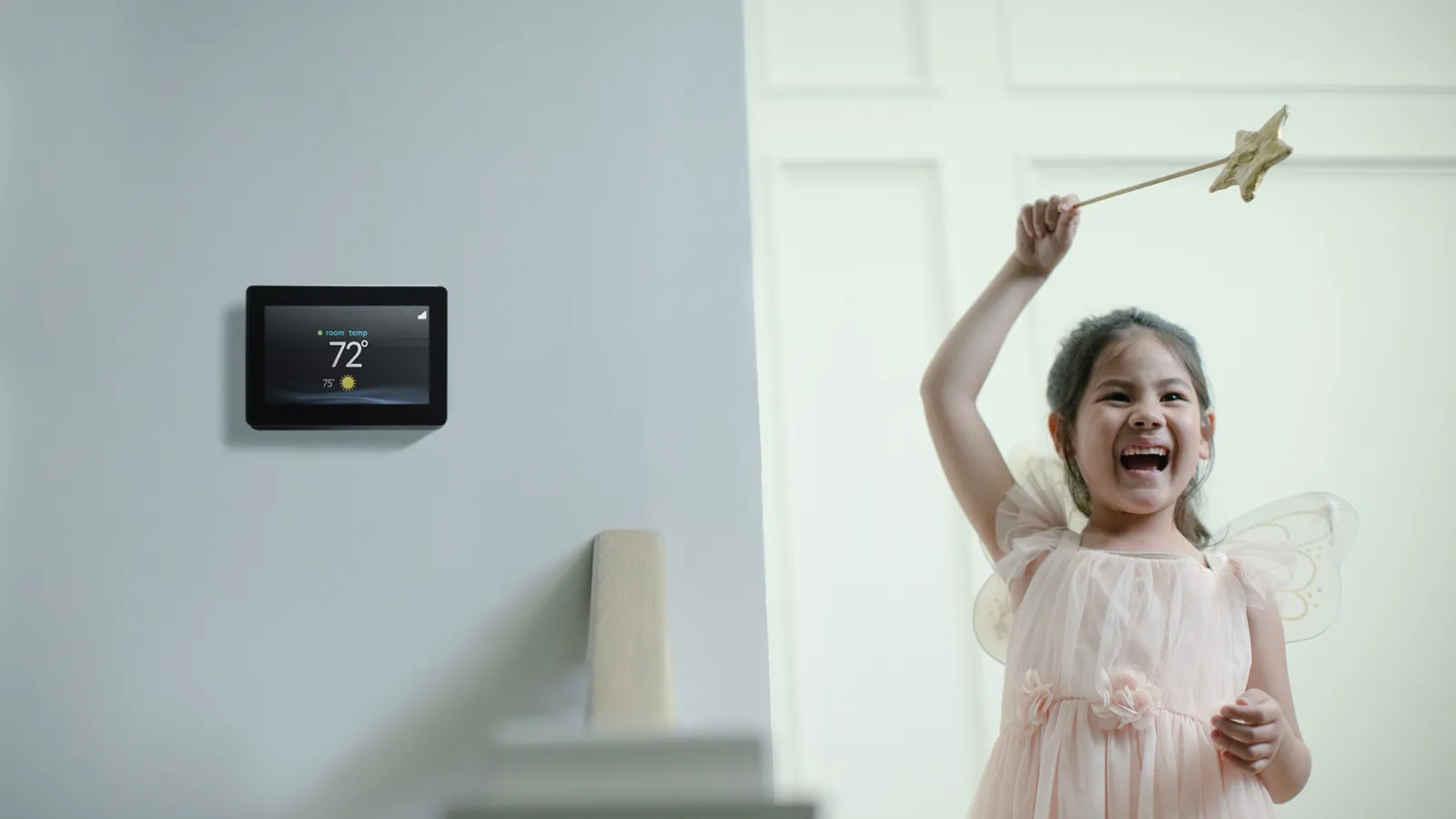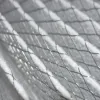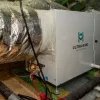If you’re thinking about the best way to ventilate your home, you’re 10 steps ahead of most homeowners. While many are content (or think they’re content) with opening windows to ventilate, it’s usually because they haven’t thought about the pitfalls of these ventilation methods.
That, or they might not be aware that there are better options.
Let’s consider the best options for a home’s fresh air ventilation system. Since we’re located in Atlanta, our guidance will largely reflect what’s best here in the South. That said, the general ideas behind our fresh air “philosophy” should be applicable pretty much anywhere.
We’ll go from the worst option to the best option.
1. Open a window
Ventilating via an open window is only a great option when:
- The outdoor air temperature is in the high 60s or low 70s; that is, it’s the temperature you want your home to be.
- Current humidity is between 40% and 60%
- The air is largely free from environmental allergens, like pollens
- There’s no outdoor air pollution to worry about
When all of those conditions are met, you should open a window. Open as many as you’d like!
But here in Atlanta, we only enjoy those conditions a few days out of the year — a few days before the onslaught of pollen in spring and the brief transition period between summer and fall. At other times, there’s either too much or too little humidity, too much or too little heat, and/or lots of allergens floating around. Our local air quality isn’t so great either. At least, not in the city itself.
So, what do you do instead? There’s always Option 2.
2. Connect a duct from the outdoors to your HVAC system
This duct will bring outdoor air directly into your return plenum. Assuming your air filter lives at the plenum (not at the return air vent inside your living space), you’ll enjoy some filtration of the air before it enters your home.
In addition, this setup gives you positive pressure ventilation. Positively pressurizing the home pushes out an equal amount of old, stale air for all of the fresh air being brought in. This is a good thing compared to opening a window, which could either positively or negatively pressurize the home depending on conditions.
Unfortunately, that’s where the advantages end. You still have to deal with:
- The incoming air being too hot or cold
- Insufficient humidity removal in summer and lots of dry air being pumped in during the winter
- Increased heating and cooling costs since your AC will work harder to cool hot air and your furnace will work harder to heat cold air
- Ducts getting dirty since you’re bringing in air laden with allergens and particulates; this can be mitigated with a prefilter, but not all installers include one.
- The fact that one duct without a fan probably won’t bring in enough fresh air to positively pressurize the home anyhow
A lot of people have ventilation “systems” like this, but we never recommend them for new installations. While they’re often set up so that homeowners can open and close the duct from an option on their thermostat, this advantage is overshadowed by the fact that your only options are no ventilation and bad ventilation.
For these reasons, we do frequently recommend…
3. Install a whole-house dehumidifier with fresh air
This is a huge step up from just having a duct — especially in our climate zone!
A whole-house dehumidifier, when properly installed, can really help keep your home comfortable during a hot, humid summer. They’re especially useful when a homeowner has an oversized air conditioner that fails to remove enough humidity on its own. Any time the home has a relative humidity (RH) reading below a preset threshold, the dehumidifier will run and make up the difference.
But it’s also possible to integrate a fresh air duct with the whole house dehumidifier, providing the advantages of:
- Filtration of incoming air
- Removal of humidity from the incoming air
- Positive pressure on the home
For these reasons, we often recommend and install these systems in homes throughout Metro Atlanta.
The disadvantages? Well, the ventilation these systems provide isn’t as useful in the winter. Whereas in summer you get the advantage of dehumidification for the incoming air, in winter you don’t get that. You’re just bringing in cold, dry air if you leave the ventilation duct open.
The good news is that there’s another ventilation option that addresses this problem.
4. Install an ERV
An ERV, which is short for energy recovery ventilator, is a dedicated ventilation device for homes. In addition, it offers some of the advantages of a dehumidifier while addressing the issue of cold, dry air entering the home in winter.
What’s unique about the ERV is that it’s designed to transfer heat and moisture between the incoming air and the outgoing air. So if the incoming air contains more heat and humidity than the outgoing air, the ERV will passively transfer some of that heat and humidity to the outgoing air. The air that then enters the home is cooler and drier than it would have been if you had just used an air duct (see Option 2)!
To be clear, an ERV is not a dehumidifier. It doesn’t remove humidity from the air. Rather, it moves the humidity from one air stream to another.
The ERV does this year-round, so you get the additional advantage of humidity management during winter. During the winter, the air inside your home contains more moisture than the air outside. The ERV allows you to retain some of that moisture (and heat) by transferring it to the incoming air stream. It’s the reverse of how it works in summer. But it’s always to your advantage!
And yes, ERVs come with an excellent filter. The incoming air is fresh! You don’t have to worry about environmental pollutants or allergens the way you would with, say, an open window.
ERVs are very energy efficient to boot. You can run them 24/7 with minimal power consumption.
People in colder climates than ours might opt for an HRV, or heat recovery ventilator instead. It’s the same as an ERV, only it transfers heat between the air streams and not humidity.
Bonus with ERVs: More precise pressurization
This won’t matter to everyone, but it is useful if you’re trying to ventilate an airtight space. An attic that’s been insulated with spray foam, for example.
A positive pressure system won’t work in this kind of space because there’s nowhere for the air to escape. Since an ERV provides balanced ventilation — that is, there’s an equal amount of air entering and leaving the space — you can adequately ventilate tight spaces that otherwise would quickly become stuffy or fail to maintain a comfortable humidity balance.
This is one reason high-performance homes typically have ERVs or HRVs. They’re so airtight that a positive pressure system wouldn’t work very well. Indoor air also quickly becomes stale since there’s no passive ventilation via air leaks in the building envelope. An ERV solves all of these problems via round-the-clock balanced ventilation.
So, what fresh air ventilation system do we recommend?
If you just need a ventilation system and aren’t concerned about humidity management, we recommend an ERV. As far as ventilation just for the sake of ventilation, it’s the best option for our climate zone.
But if you need dehumidification during the summer and would like to improve your home’s ventilation at the same time — this is a more common scenario in the Atlanta area — then we recommend a whole-house dehumidifier with fresh air.
The best way to find out what you need is to give us a holler! We’ll visit your home to discuss your concerns and point you toward the best solution.






